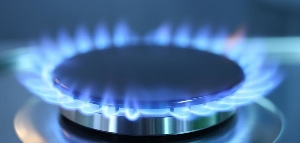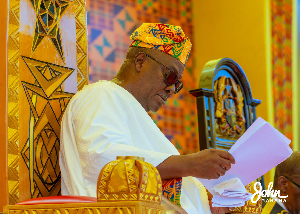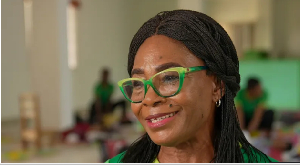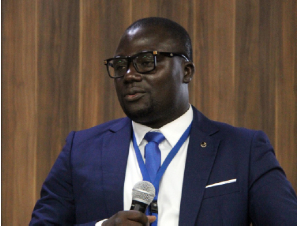The 2022 Ghana Demographic and Health Survey (GDHS) report by the Ghana Statistical Services has revealed that around a quarter – 23 per cent – of households use clean fuel and technologies for cooking.
This encompasses stoves or cookers powered by electricity, liquefied petroleum gas/natural gas/biogas, solar and alcohol/ethanol.
The findings mean that over three-quarters of the household population, representing about 76 per cent of households across the country uses solid fuels for cooking.
Reliance on clean fuels and technology for cooking in urban areas stood at 37 per cent and 7 per cent in rural areas. On a regional basis, Greater Accra has the highest percentage of households that use clean cooking sources at 56.8 per cent, with Savannah Region being the lowest with 7 per cent.
Regarding lighting, the report said nearly 99 per cent of the household population uses clean fuels and technologies — including electricity, solar lanterns, rechargeable flashlights/torches/lanterns and biogas lamps. It added that overall, 24 per cent of the household population uses clean fuels and technologies for cooking, heating and lighting.
This comes at a time when clean cooking is an essential part of achieving the world’s challenge to move to net zero by 2050 and closely ensuring clean energy access for all by 2030.
In Ghana, the World Bank estimates that 16,000 people die prematurely from air pollution every year, with lack of access to clean cooking being a contributory factor.
Also, Sustainable Energy for All estimates that it could take the country about 50 years to fully transition from wood and charcoal to clean fuels.
As such, the GSS report echoed many calls to take pragmatic measures to reduce citizens’ dependency on solid fuels gradually.
The wider context
Global Alliance for Clean Cookstoves stated in its ‘Ghana Country Action Plan for Clean Cooking’ document that exposure to smoke from traditional cookstoves and open fires – the primary means of cooking for nearly three billion people in the developing world – causes two million premature deaths annually, with women and children particularly affected.
Additionally, the toxic cookstove smoke contributes to a range of chronic illnesses and acute health impacts, such as pneumonia, bronchitis, cataracts, lung cancer, cardiovascular disease, low birth weight and burns.
The World Health Organisation also estimates that harmful cookstove smoke is the fifth leading cause of death in developing countries.
Other available data indicates that some 2.4 billion people are without access to clean cooking, costing the world more than US$ 2.4 trillion in damage to the climate and local economies and contributing to 3.2 million premature deaths yearly.
Despite these damning findings and impacts on humans and the environment, clean cooking only receives about 1 per cent of the estimated US$ 10 billion per year required to achieve universal access by 2030.
Way forward
One key way out for Ghana is to expand the clean cooking market by scaling up access, say experts and civil society actors in the space.
Director of Country Transitions at the Clean Cooking Alliance (CCA), Lindsay Umalla, in an earlier interview with the B&FT, emphasised the importance of accelerating and prioritising clean cooking as one of the significant climate solutions.
She noted that it is impossible to meet development and climate change goals without changing unhealthy cooking practices, especially when it emits greenhouse gases.
The Chief Executive Officer (CEO) of Innohub, Nelson Amo, also told the B&FT that manufacturers of improved stoves capable of reducing greenhouse gas emissions must harness carbon financing opportunities to subsidise their operations to help increase accessibility.
Minister of Energy Matthew Opoku Prempeh indicated at the 2022 Global Clean Cooking Forum held in Accra that the ministry was developing a National Clean Cooking Strategy and Investment Prospectus with the help of the World Bank to promote and develop the clean cooking market in the country and scale-up access.
He also noted that the government was committed to distributing 3 million improved cookstoves by 2030 under the Carbon-for-Stove project.
Other findings
The Ghana Demographic and Health Survey (GDHS) findings on housing characteristics, household population, water, sanitation and hygiene show that the majority of household population – 83 per cent – has electricity, including 95 per cent in urban areas and 69 per cent in rural areas.
On information communication technology (ICT) and Internet use, it stated: “In Ghana, 94 per cent of households own a mobile phone, 66 per cent own a television, 53 per cent own a radio, and 16 per cent own a computer. ICT ownership is higher in urban areas compared to rural areas.
It established television is the most frequently accessed form of media in Ghana, with 62 per cent of women and 63 per cent of men aged 15–49 watching television weekly, while 42 per cent of women and 51 per cent of men listen to radio at least once a week.
“Only 4 per cent of women and 8 per cent of men read the newspaper on a weekly basis. Overall, 27 per cent of women and 23 per cent of men access none of these three media at least once a week. Almost half – 47 per cent – of women and 65 per cent of men have ever used the Internet, with 43 per cent of women and 62 per cent of men reporting they used the Internet in the last 12 months,” portions of the report’s findings read.
Business News of Thursday, 15 February 2024
Source: thebftonline.com

















